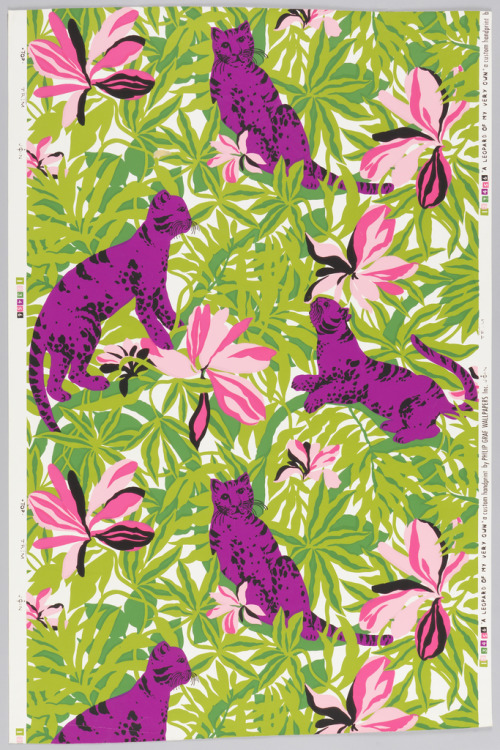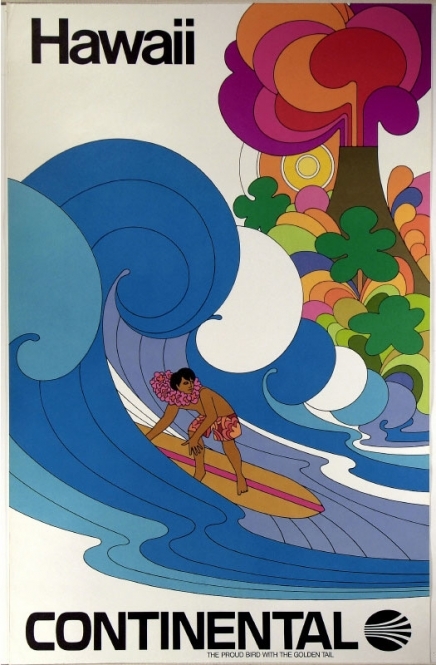Airline Poster, c. 1969
This week’s Smithsonian Snapshot marks the start of summer with this 1969 airline poster.
The Smithsonian’s National Air and Space Museum’s collection of more than 1,300 posters focuses on advertising for aviation-related products and activities. In the mid 1900s, airline advertisements like this one from Continental Airlines promoted exotic travel destinations.
This multicolor screen print shows a Hawaiian surfer wearing orange-and-red swim trunks and pink lei. In the background a volcano hidden among a lush, green jungle explodes with a swirl of warm colors. The black lines and bright solid colors are typical of psychedelic posters from the 1960s.
The poster collection is a unique representation of the cultural, commercial and military history of aviation. It represents an intense interest in flight, both public and private, during a significant period of its technological and social development.
To learn more about aviation advertising, visit the National Air and Space Museum’s “Fly Now” online exhibition website. To view more summer-related items at the Smithsonian, visit our summer Pinterest board.
This item is one of 137 million artifacts, works of art and specimens in the Smithsonian’s collection. It is not currently on display. To learn more about this item, visit the National Air and Space Museum website.















